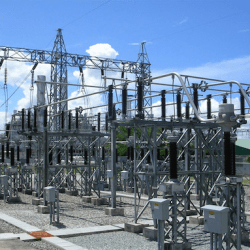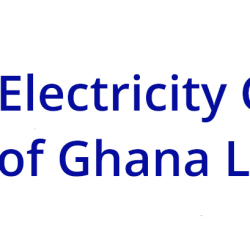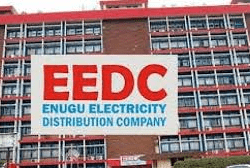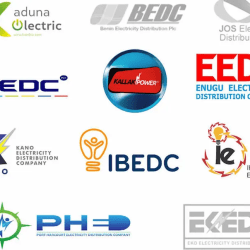A season of collapses
The national grid in Nigeria has collapsed for the ninth time this year, creating another nationwide blackout that continues to highlight the instability of the country’s energy infrastructure. According to reports, the Nigerian system operator recorded zero megawatts (MW) output as of 2:09 pm on November 5, 2024. Various electricity distribution companies (DisCos) across the country, including Ikeja Electric, Jos Electricity Distribution Company, and Abuja Electricity Distribution Company, have confirmed the outage, attributing it to a system failure from the national grid.
The recurrence of these collapses has prompted public frustration, with key officials pointing to outdated infrastructure as the main cause of grid instability. Adebayo Adelabu, Nigeria’s Minister of Power, has emphasized the need for an infrastructure overhaul and significant investment in the power sector to prevent frequent collapses. This article delves into the causes behind these grid failures, their impacts, and the potential solutions to stabilize Nigeria’s power supply.
Timeline of National Grid Collapses in 2024
The Nigerian power grid has faced persistent challenges in 2024, with previous collapses recorded on:
- February 4
- March 28
- April 15
- July 6
- August 5
- October 14, 15, and 19
The ongoing collapses reflect deeper structural issues in Nigeria’s electricity sector, including outdated infrastructure and limited capacity to meet national power demands. The latest incident further raises concerns about energy reliability and the government’s capacity to address these systemic challenges.
Root Causes of Grid Collapses
1. Aging Infrastructure
- Much of Nigeria’s grid infrastructure dates back several decades, and its outdated equipment is ill-suited to handle modern electricity demands. The national grid’s reliance on old technology has made it more susceptible to technical failures and outages, even under normal operational conditions.
2. Insufficient Investment in Power Infrastructure
- The lack of investment in the power sector has left the grid with limited upgrades and minimal resilience against failures. While private-sector participation in Nigeria’s power sector has increased over the years, the capital required for complete grid modernization remains largely unmet, slowing improvements.
3. Limited Energy Generation and Transmission Capacity
- Nigeria’s generation and transmission capacities are insufficient for its growing population and expanding industrial sectors. The imbalance between energy demand and supply creates stress on the grid, making collapses more likely, especially during peak demand periods.
4. Operational Inefficiencies and Poor Maintenance
- Poor management practices and inadequate maintenance have contributed to recurring failures. Frequent equipment breakdowns are not quickly addressed, exacerbating the grid’s fragility and reducing its ability to withstand fluctuations or surges in electricity demand.
5. Inadequate Backup and Resilience Mechanisms
- Modern grids often have backup mechanisms and redundancies to prevent or mitigate the impact of collapses. However, Nigeria’s grid lacks sufficient backup capacity and lacks modern, automated systems to help stabilize the grid in case of failures.

Impacts of the National Grid Collapse
The recurrent collapses of Nigeria’s national grid have several wide-ranging impacts:
1. Economic Disruptions
- Power outages disrupt businesses, especially small and medium enterprises (SMEs) reliant on continuous electricity for operations. Prolonged blackouts lead to revenue losses, increased operating costs (especially with reliance on generators), and overall productivity declines.
2. Impact on Public Services
- Public institutions such as hospitals, schools, and government offices are affected, reducing service delivery quality. Essential services, including healthcare, are hit particularly hard, as reliable electricity is critical for lifesaving equipment and facilities.
3. Reduced Foreign Investment
- Investors are often deterred by unreliable infrastructure, which increases operational costs. The frequency of power failures weakens investor confidence, limiting foreign direct investment (FDI) in sectors like manufacturing, technology, and logistics.
4. Public Frustration and Social Implications
- For Nigerian citizens, frequent blackouts lead to frustration, with many facing challenges in daily life as a result of unreliable electricity. This also has social implications, including impacting educational opportunities, safety, and quality of life.
Government and Stakeholder Responses
Following the most recent collapse, major stakeholders and DisCos, including Ikeja Electric and Jos Electricity Distribution Company, have assured consumers of ongoing efforts to restore power. However, a broader, long-term strategy is needed to address the root causes of these collapses. Responses have included:
1. Commitment to Infrastructure Overhaul
- Minister Adebayo Adelabu has highlighted the need for substantial investment in infrastructure. Plans are in place to revamp outdated components and modernize equipment, although these projects are costly and time-intensive.
2. Public-Private Partnerships (PPPs)
- The Nigerian government has encouraged PPPs to raise the capital needed for major infrastructure projects. Private-sector involvement could bring in both funding and expertise necessary for grid expansion and improvement.
3. Increased Focus on Renewable Energy
- Renewable energy sources, including solar and wind, are being explored as alternatives to diversify Nigeria’s energy mix. Renewables could provide a more reliable and sustainable power source, reducing dependence on the national grid and increasing energy access, particularly in rural areas.
4. Capacity-Building and Training for Improved Maintenance
- Efforts to improve operational practices and train grid operators on best practices could mitigate some of the issues related to grid management and maintenance.
Possible Long-Term Solutions
To ensure grid stability and reduce the frequency of collapses, Nigeria’s power sector requires a comprehensive overhaul. Key solutions include:
- Modernization of Grid Infrastructure: Upgrading transmission and distribution equipment is essential to improve efficiency and reduce technical faults. Implementing digital control systems can help monitor grid performance in real-time, preventing failures before they escalate.
- Decentralization of Power Generation: Developing regional or microgrids could reduce the burden on the national grid, creating localized power systems that are less susceptible to nationwide failures.
- Investment in Alternative Energy Sources: Expanding Nigeria’s renewable energy capacity could diversify the energy mix, reduce grid demand, and offer reliable alternatives during grid outages.
- Policy Reforms and Regulatory Support: Enforcing policies that support investment in infrastructure, maintenance, and renewable energy adoption would create a more stable environment for energy sector reforms.








